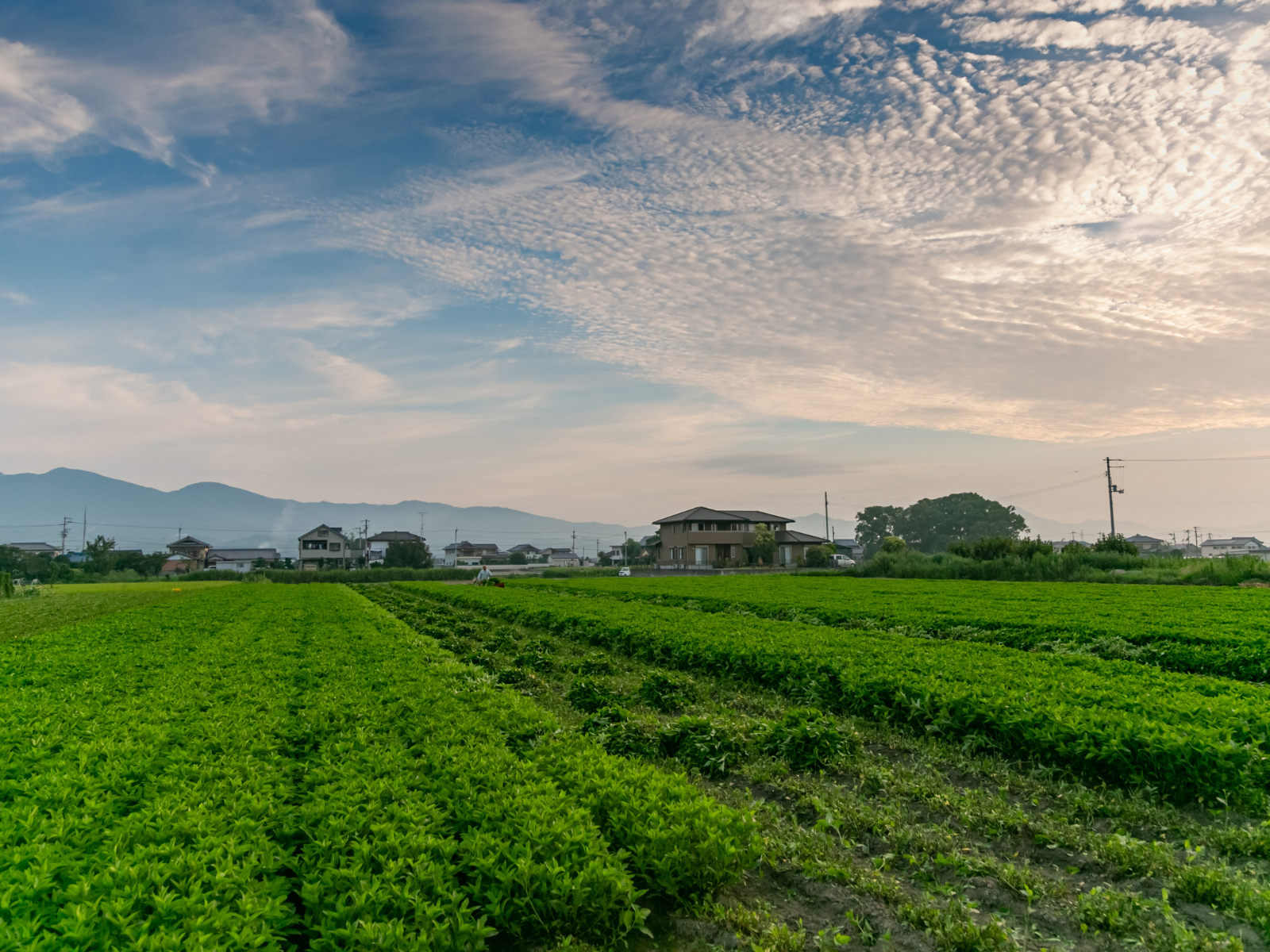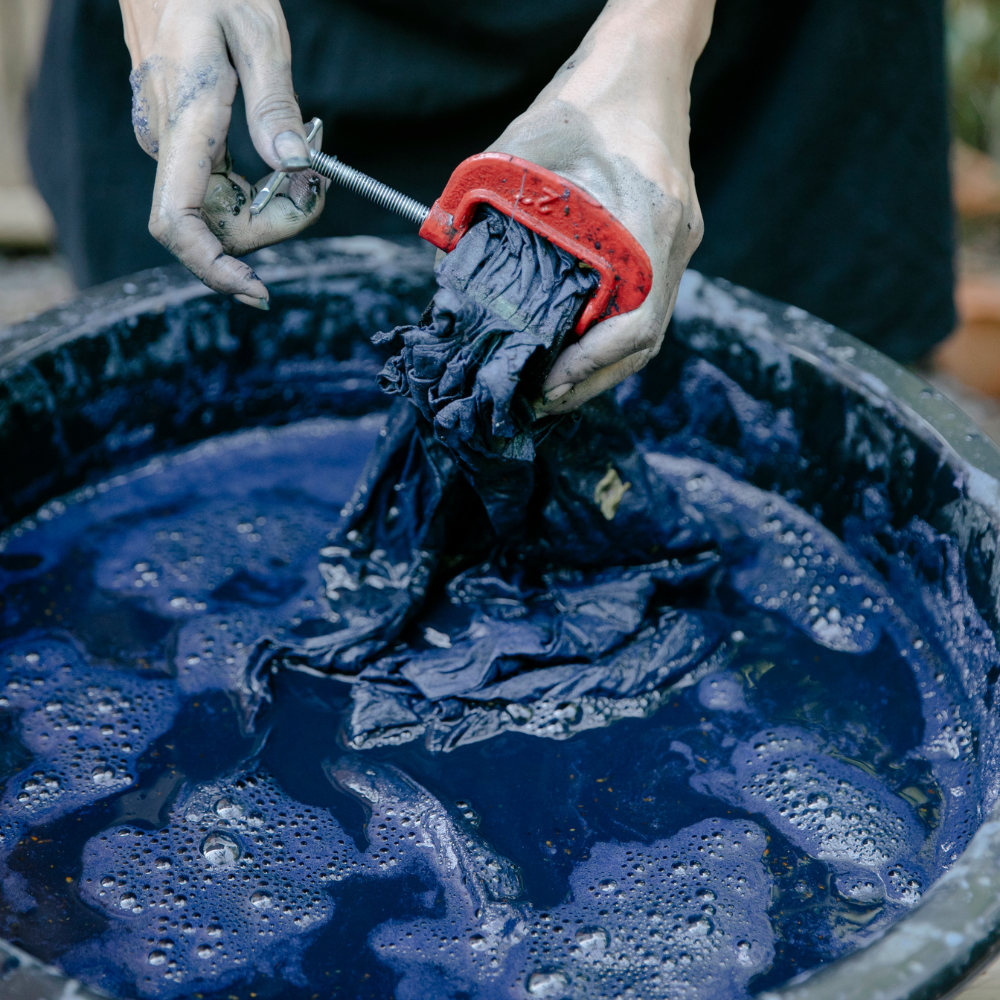Are you ready to explore a new world of vibrant blues?
Looking for a new skill to add to your art repertoire and up your textile game?
Get your creative juices flowing with the ancient art of indigo dyeing!
This ancient dyeing technique has been around for centuries and remains a beloved practice among artists and textile enthusiasts alike.
And why wouldn't it?
Indigo dyeing produces some of the most striking and unique patterns, from traditional Japanese shibori to contemporary tie-dye designs.
If you've ever been curious about how to create beautiful art using indigo dyeing techniques, then you've come to the right place.
In this article, we'll delve into the world of indigo dyeing, exploring the history, techniques, materials, tips, and tricks to help you master the art of dyeing fabric with indigo.
With just a few simple tools, you can have fun experimenting, producing stunning works of natural art.
We'll take a deep dive into everything blue—from understanding what makes up an indigo vat, to learning different techniques so that every artist can master this ancient craft.
With proper instruction and practice, the possibilities of what you can make with indigo are endless - from wall hangings and table runners, t-shirts and throws- all showcasing gorgeous shades of blues that span from dark navy hues to lighter sky variations.
Whether you are a novice or an experienced artist, join us on an exciting journey into the blue abyss of Indigo dyeing and explore all there is to discover about this funky traditional craft.
So, sit back, relax, and let’s journey together into the world of indigo.
It's time to get started on our journey into the artistry of blueness, where each twist in color is as unique as your own creativity!
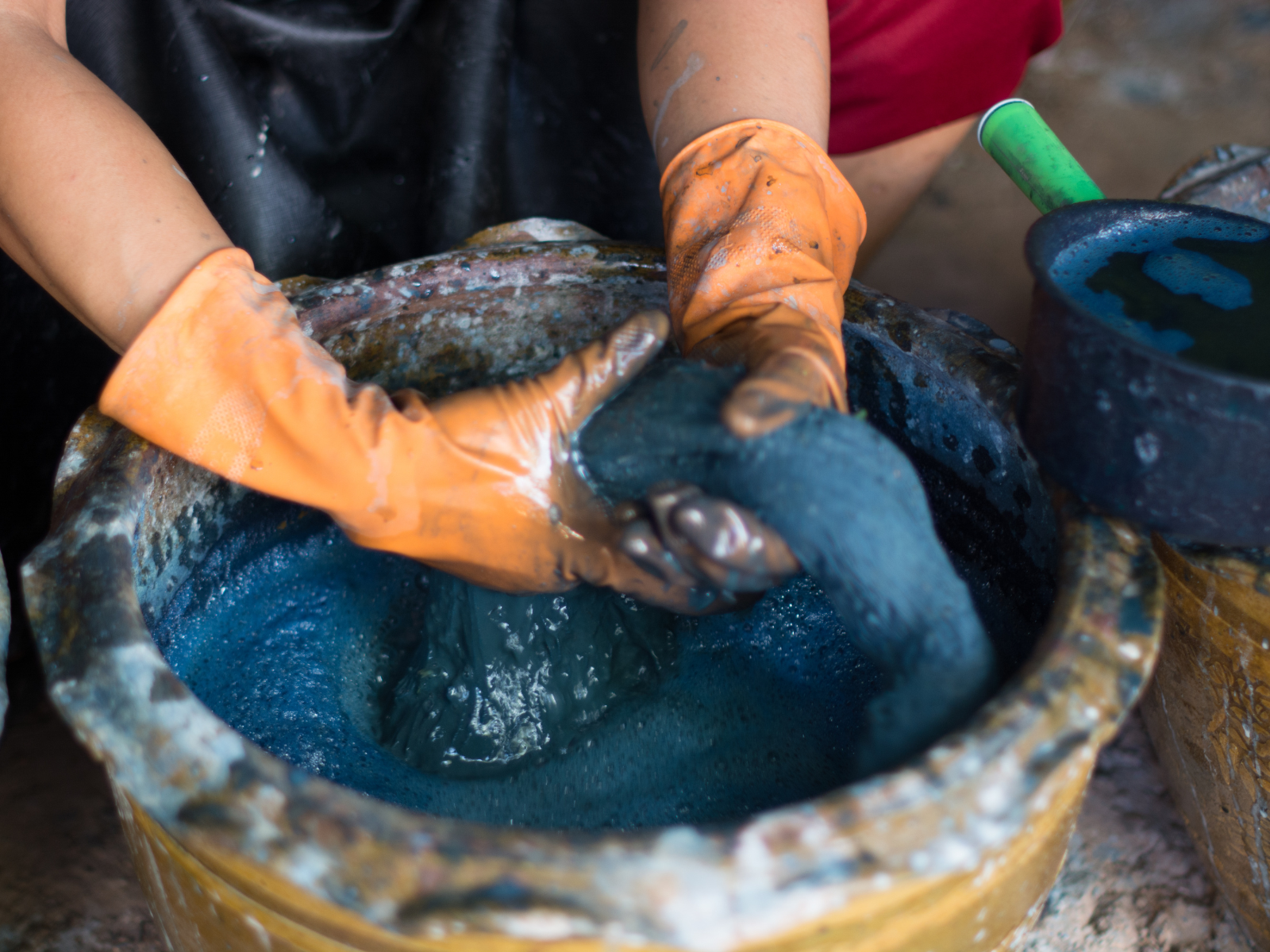
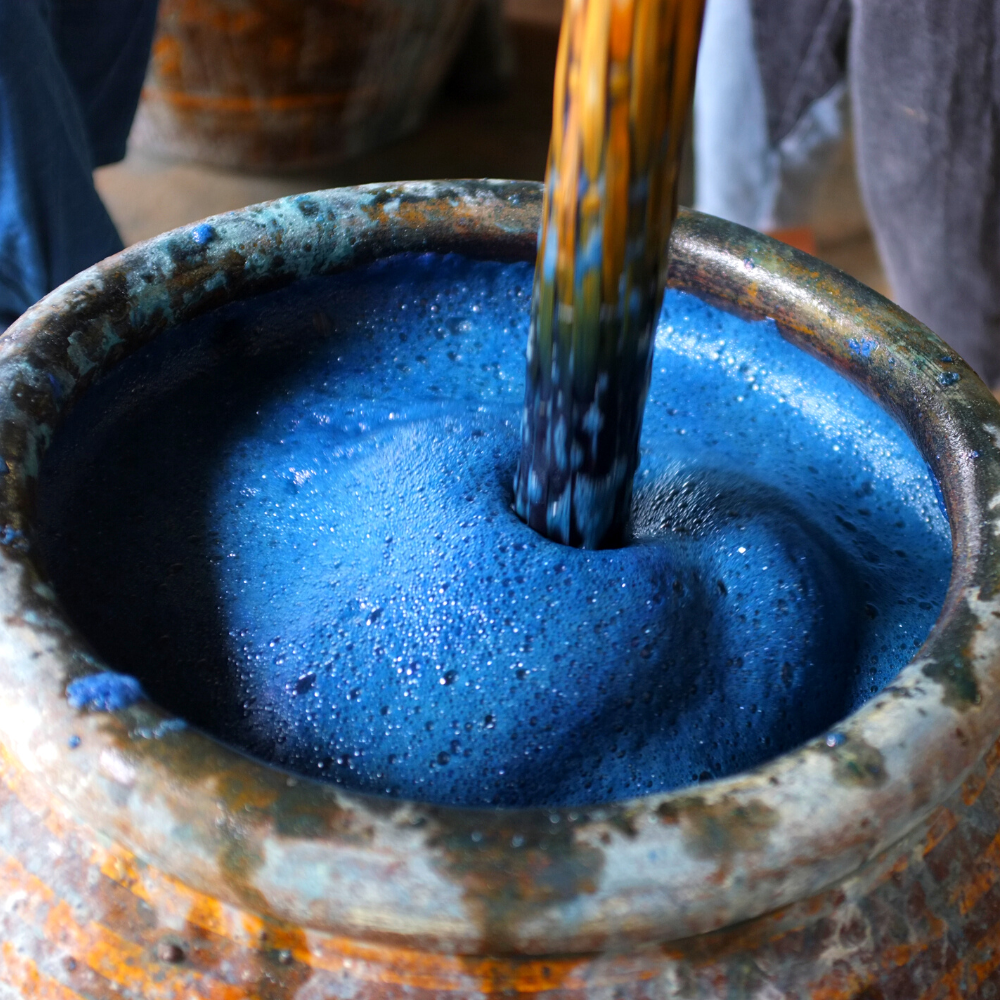
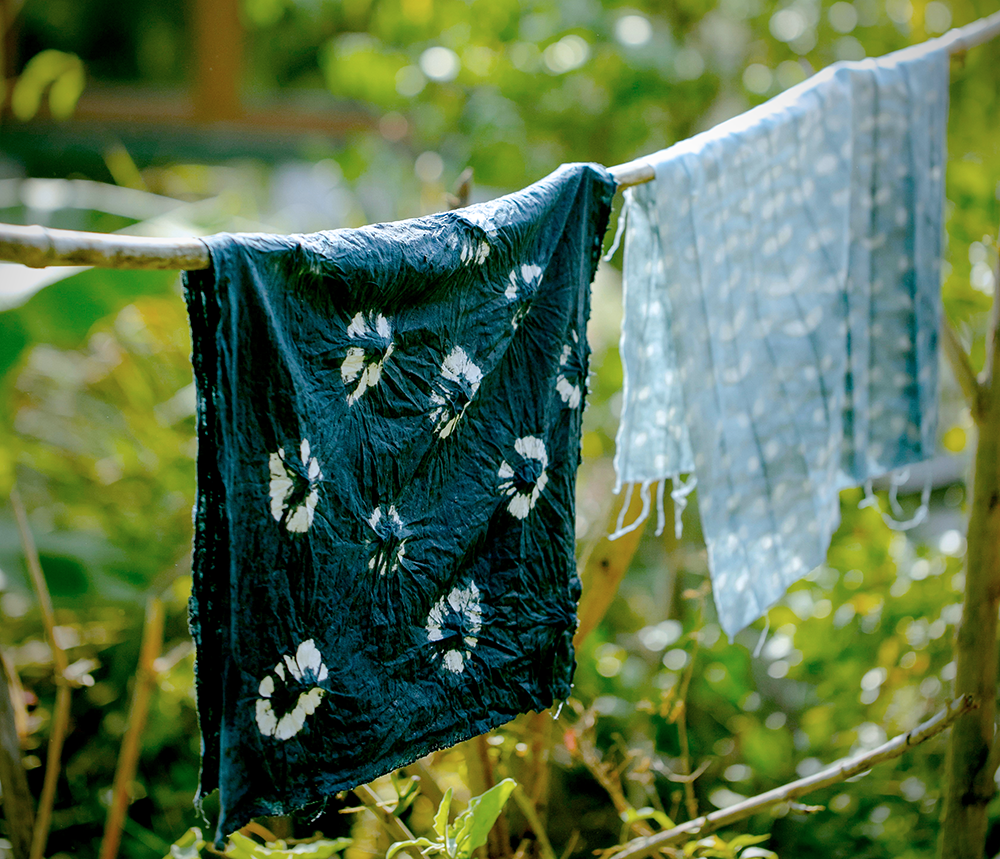
What's All This Indigo About?
Indigo, dear reader, is not just a color.
It's the ancient dye that's been jazzing up our blue jeans and coloring our clothes for centuries.
Originating from the plant Indigofera tinctoria, it's nature's favorite shade of blue.
From the ancient Egyptians to the modern-day fashionistas, indigo has made quite a name for itself.
Indigo is a natural dye, and as such has special properties that make it an excellent choice for creating art with fabric.
It's lightfast, meaning the color won't fade in sunlight, and it adheres to the fabric without needing mordants or other chemicals.
Not only is indigo pigment a versatile dyeing material but it also has an interesting history.
Let's take a journey back in time to explore the fascinating origins of this ancient dye.
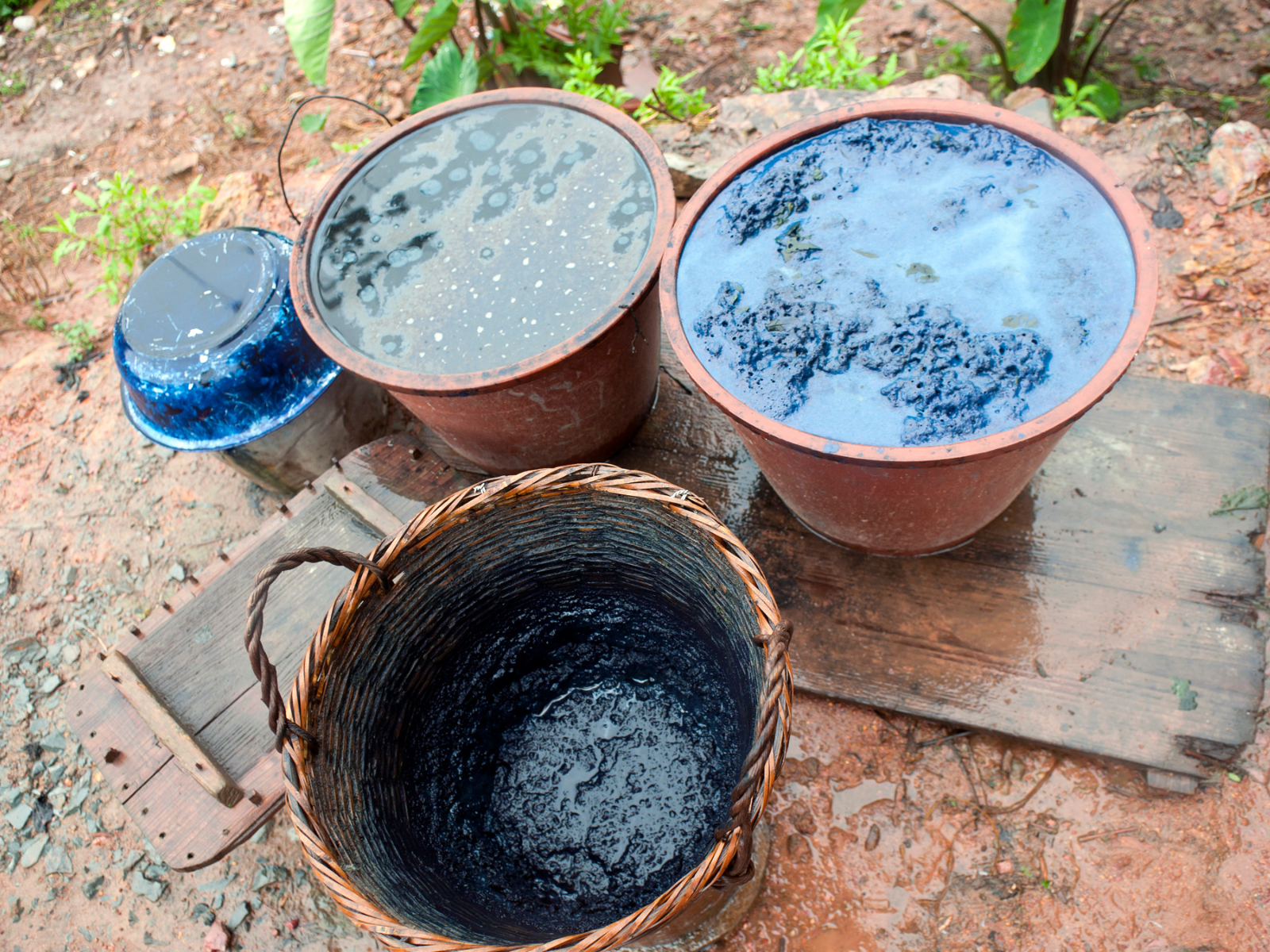
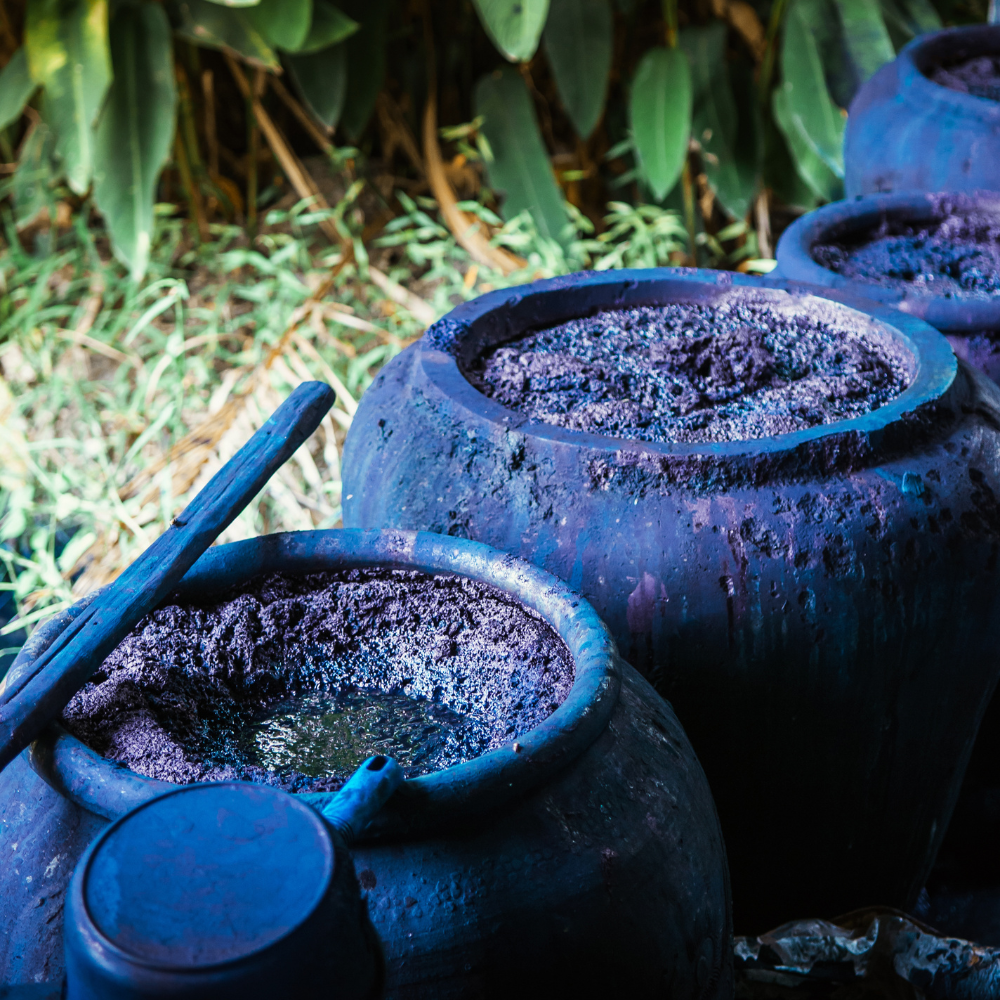

What is Indigo Dye?
Indigo exists in plants that grow all over the world; it gives beautiful shades of blue — from the palest summer sky to an almost purple black, depending on the process.
It's virtually the only blue dye that occurs naturally, and its ability to produce a wide range of shades has made it the most successful dye plant ever known.
Indigo dye, in its most basic form, is a plant-based dye produced from the leaves of the Indigofera tinctoria, which is native to parts of India and other tropical regions.
The leaves are crushed and soaked in water for several days, producing a dark blue liquid known as indigo extract or "indigo vat".
This indigo dye vat solution is then used to dye fabric, producing a gorgeous range of shades from navy to powder blue.
These indigo vats are easy and relatively safe to use, as no harsh chemicals are needed for the process.
Indigo solution or indigo bath can also be used to paint on other surfaces such as ceramics and wood.
The indigo flower is an integral part of the dye process, as it provides the basic color pigment.
The flower is a beautiful purple-blue shade which gives off a unique scent that has been admired for centuries.
Indigo can be found in dark blue crystalline powder that transforms into sublime hues; the powder can be dissolved in water and then used to dye fabrics, fibers, or yarns.
The indigo blue pigment is extracted from the leaves of indigo-bearing plants and is the oldest natural source of blue dye in the world.
It has been used for centuries for dyeing fabrics, and the blue hue is still popular today.
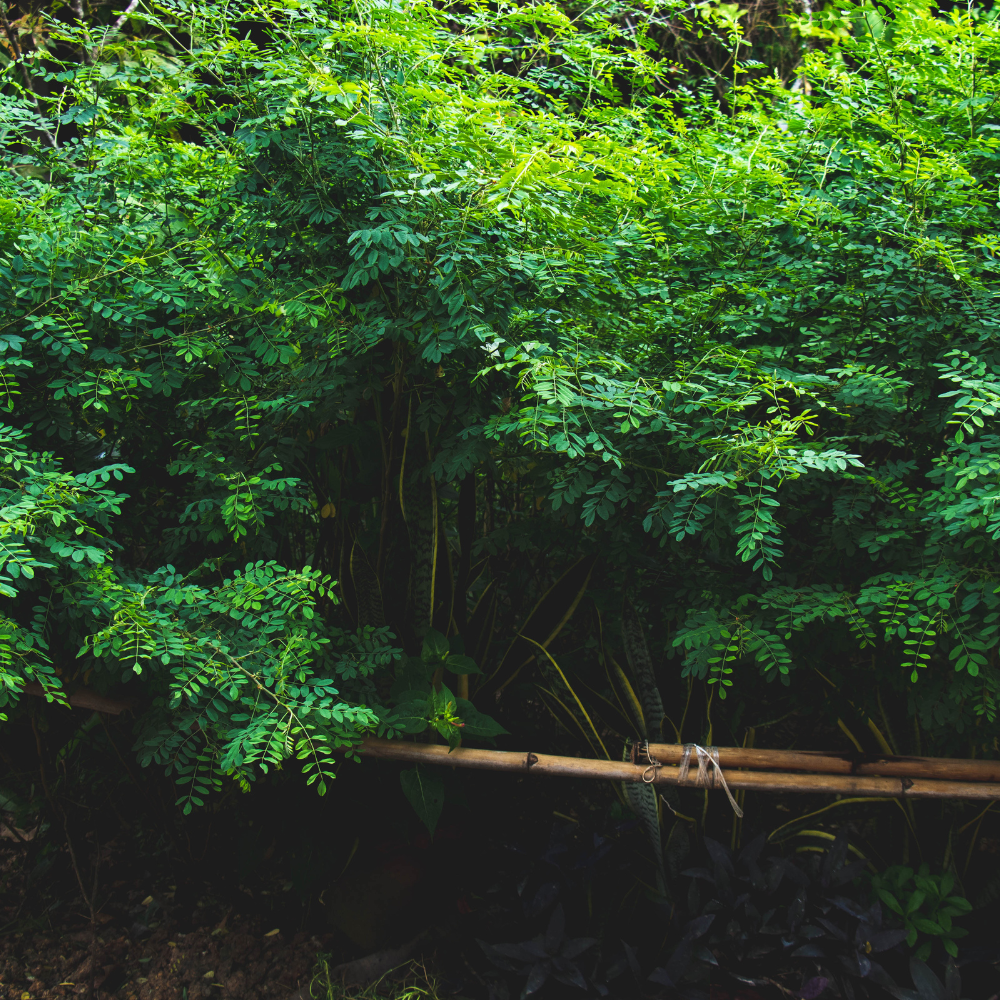
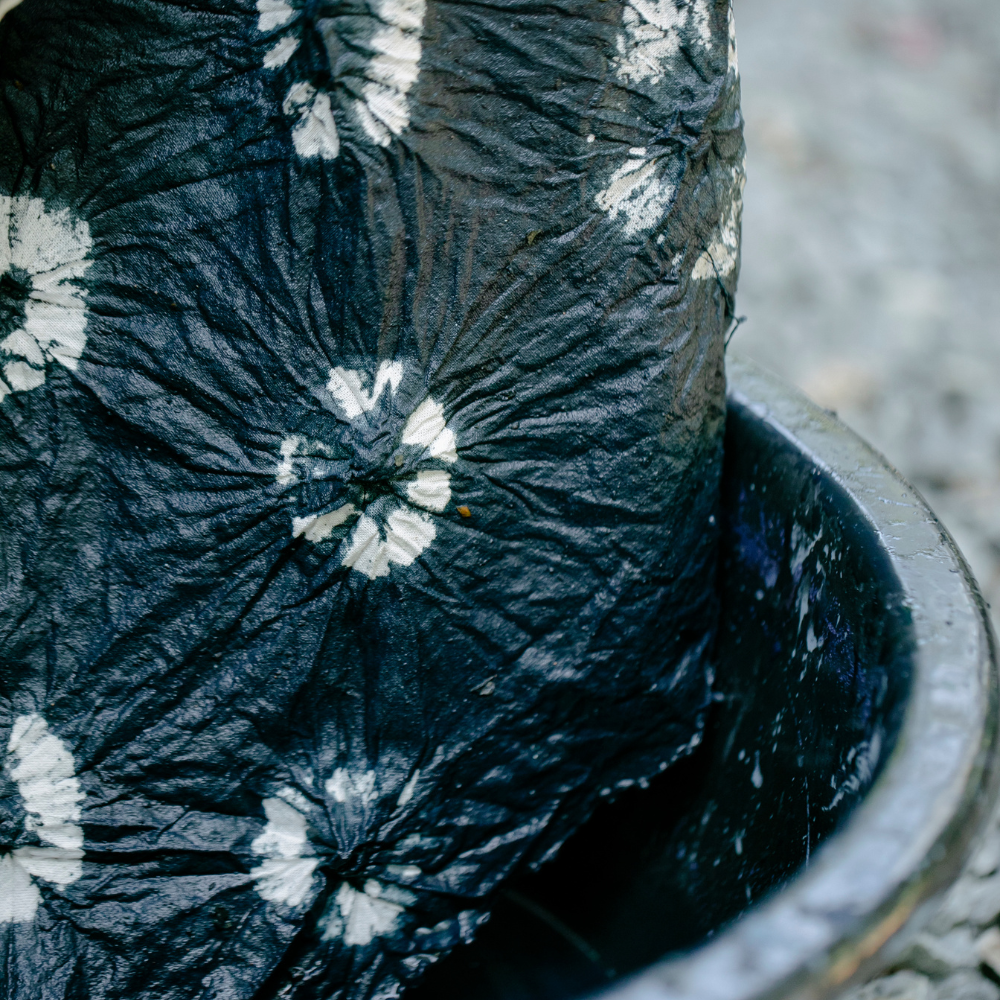
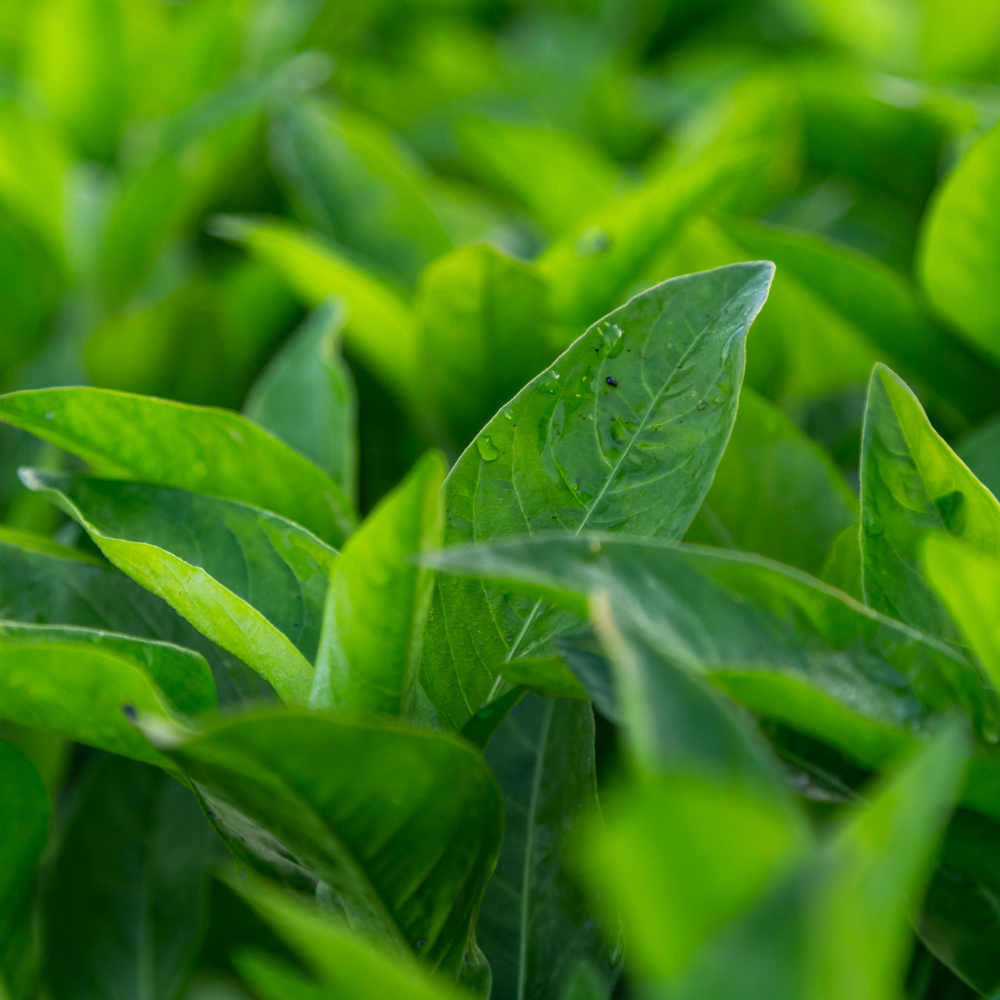
History & Cultural Significance of Indigo Dyeing
Did you know that this ancient practice of using natural plant dyes has a long and rich history that spans many cultures and continents?
This magical and creative art helps us understand our relationship with nature while also recognizing its beauty.
It's been the most famous and most widely used natural dye, leaving its mark on everything from ancient textiles to modern-day jeans.
Most natural indigo was harvested from the woad plant in Europe and Asia, but many cultures around the world have historically used indigenous plants to produce their own vibrant blues.
Indigo dyeing is more than a process; it's a tradition steeped in history, culture, and artistry.
It is believed to have originated in India, where the plant Indigofera tinctoria grows abundantly.
India's indigo industry dates back to the 4th century BC, and it was introduced to Europe in the 16th century via the Spanish explorer Don Francisco de Almeida.
The dyeing process was introduced to other countries, such as Japan, China, and Africa, where it became deeply ingrained in their textile traditions.
In Japan, indigo dyeing was historically used to create intricate patterned fabrics known as shibori, which required careful manipulation of the fabric before dipping it in an indigo vat.
The Japanese even called their blue dye “ai” (indigo) and used it to create beautiful items from kimonos to quilts.
In China, the dye was used to decorate porcelain and lacquerware.
In Africa, indigo was used for centuries to dye fabrics in a variety of colors, from pale blues to vibrant purples.
Seen a sign of wealth and power with kings wearing garments dyed in exquisite patterns, indigo has also been part of American culture for hundreds of years.
Indigo dyeing is also highly valued in western cultures for its practical uses, from dying jeans to creating beautiful artworks on fabric.
The industry boomed during the 18th and 19th centuries, when indigo was commonly used to dye cotton and wool for clothes and textiles.
The indigo trade was also tied to the slave trade, as many enslaved people were forced to work on indigo plantations in the Americas.
European indigo planters continued the practice in India and Indonesia.
Today, indigo dyeing is still practiced in many parts of the world, from traditional workshops to contemporary art studios.
From the intricate Shibori patterns of Japan to the deep blue Bogolan textiles of West Africa, indigo has been an integral part of textile traditions around the globe.
As we take a journey through the world of indigo dyeing, let's remember to celebrate its unique history and appreciate the beauty that it has brought into our lives.
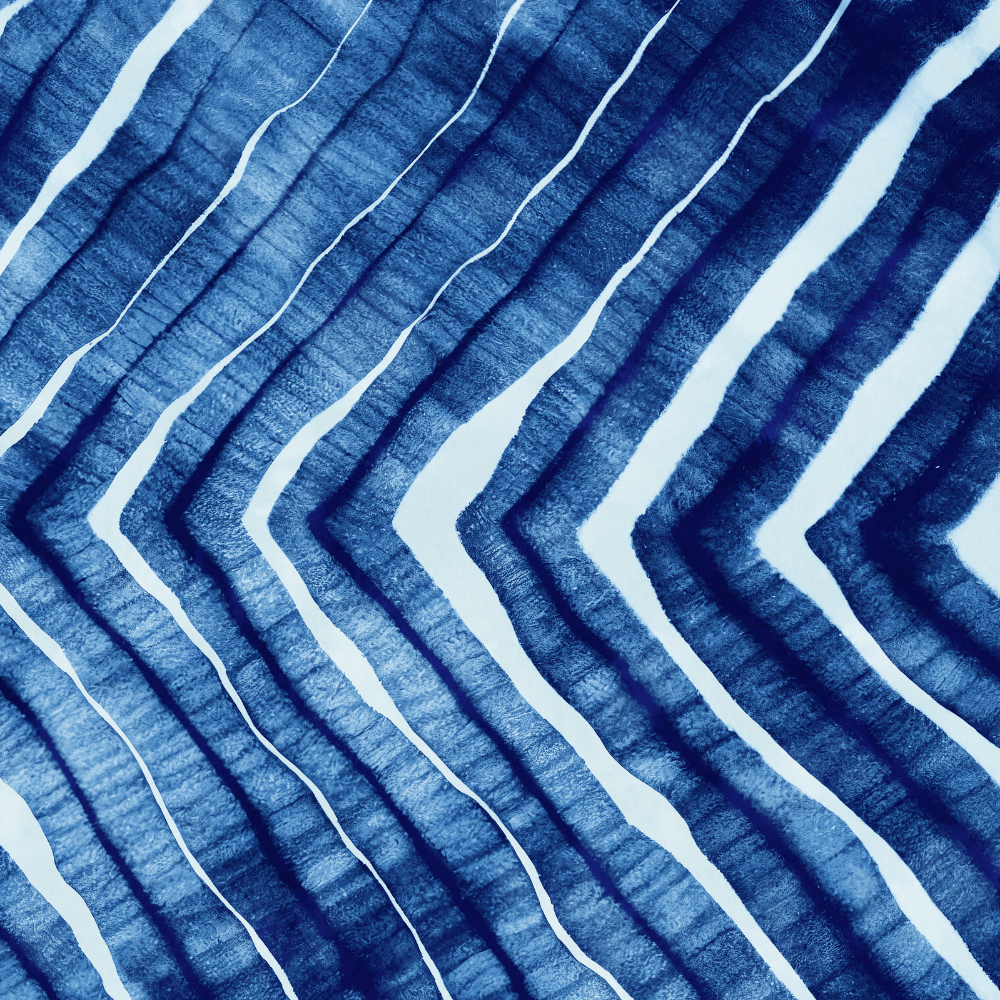
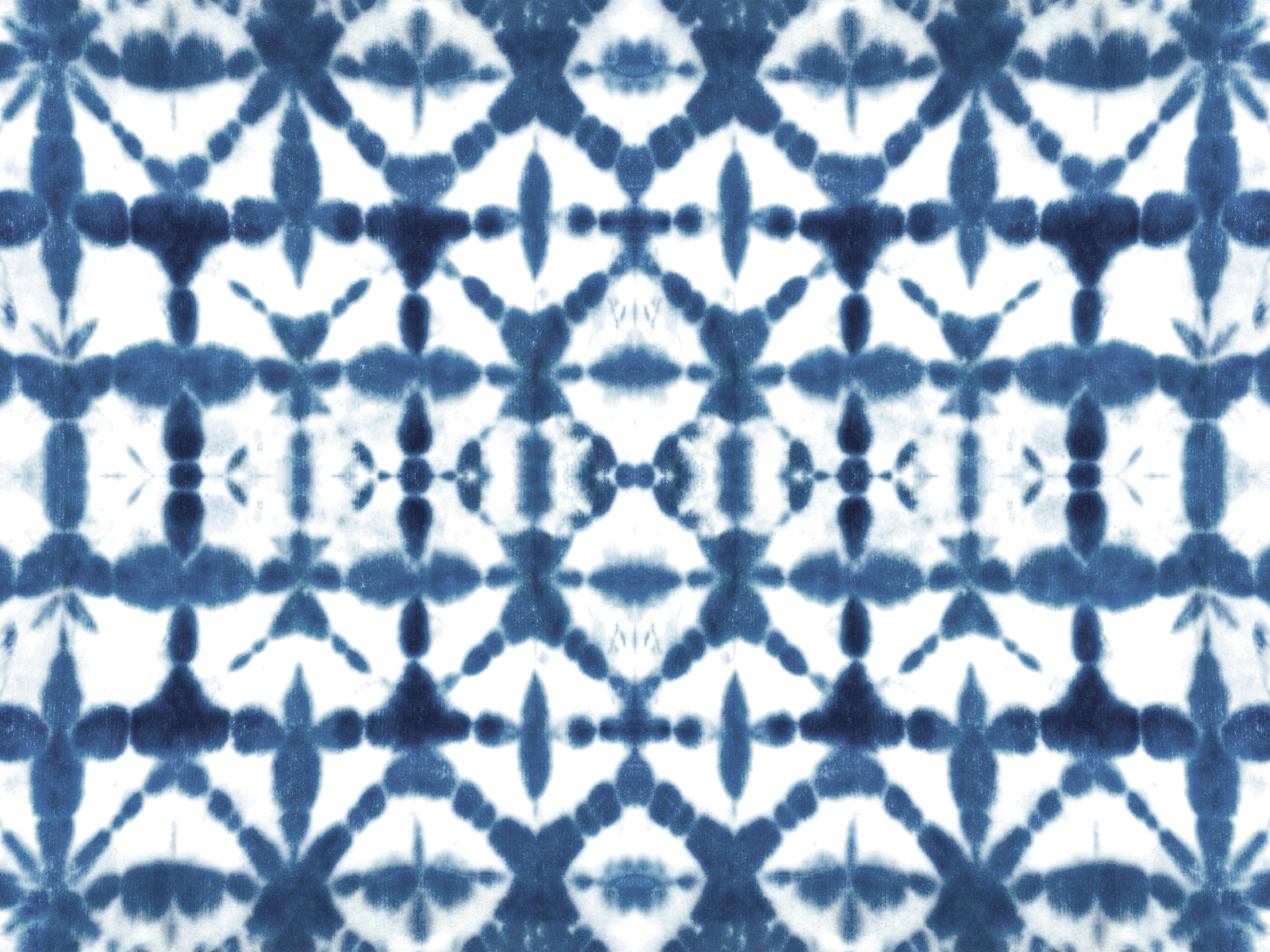

The Science Behind the Process
Now, let's take a peek into the science behind this magical transformation.
In order to make indigo dye, you need leaves from a variety of plant species such as indigo, woad, and dyer's knotweed.
The leaves are harvested, then fermented and dried.
After the leaves are dried and ground into a powder, they are mixed with water to form a paste that is called an extract.
Extracting from the leaves by soaking them in water for several days to release the indigo molecules from their cells results in liquid or paste.
When the fabric is dipped in this solution, it bonds with the fibers and forms a blue pigment.
This process is called oxidation and it's what gives fabric its beautiful blue color.
The process of indigo dyeing is based on the chemical reaction between indigo molecule and oxygen, which creates the deep blue color.
The deeper the shade of blue, the more times the fabric has been dipped into the vat solution.
The process begins with a chemical reaction between two substances: indigo and thioxanthone (or tannin).
The reaction produces what is called an indigo vat, which contains molecules of indoxyl that are reduced to leuco-indigo when oxygen is added.
This leuco-indigo is a soluble substance that binds to the fiber in the fabric, creating a deep blue color.
The indigo stock solution is usually maintained by adding thioxanthone (or tannin) and other chemicals to the vat, which act as mordants.
Mordants are used to help the indigo adhere to the fibers of the fabric and give it a longer-lasting color.
Dyeing with indigo is complex but ultimately produces beautiful results.

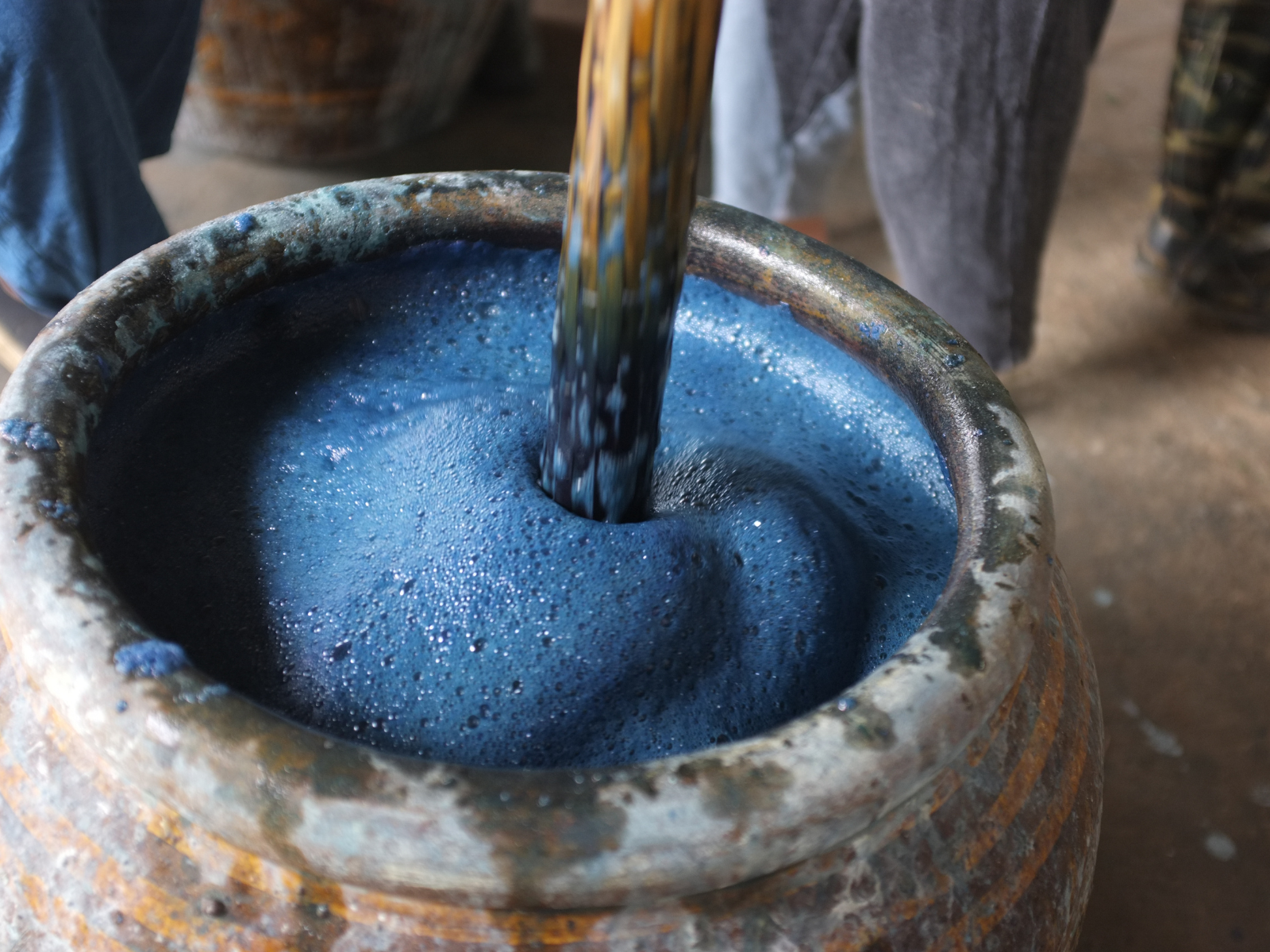

The Process of Dyeing with Indigo
The process of dyeing with indigo is an art form in itself, involving creating a dye vat, which is a container filled with a mixture of water, indigo, and a reducing agent.
There are different methods of dyeing such as immersion, dip-dyeing, and tie-dyeing, each yielding unique results.
With immersion dyeing, the fabric is completely submerged in the dye bath, resulting in a uniform color.
Dip-dyeing, on the other hand, involves dipping parts of the fabric into the dye bath, creating gradient effects.
Tie-dyeing, a favorite of many, involves folding, twisting, or bunching the fabric, and then binding it before dyeing, resulting in a plethora of patterns.
The possibilities are endless!
When you're done with the dyeing process, it's important to remember to rinse and wash the fabric thoroughly. This not only removes any excess dye, but also helps set the color for a more permanent effect.
To dye with indigo, you first need to mix a vat of indigo dye.
You can use either natural indigo powder or synthetic indigo dye, which is easier to use but lacks the depth and character of natural indigo.
The vat also requires special ingredients, such as a reducing agent (sugar or fructose) and an alkaline agent (soda ash or lye), to activate the indigo and create the dyeing environment.
You will also need fabric for dyeing, such as cotton, wool, silk or linen.
It is important to use fabrics that are not treated with optical brighteners or softeners.
To achieve the most vibrant colors, it's best to use undyed fabric.
In addition to these materials, you'll also need rubber gloves, a bucket or tub for dyeing, and an eye dropper for adjusting the vat pH.

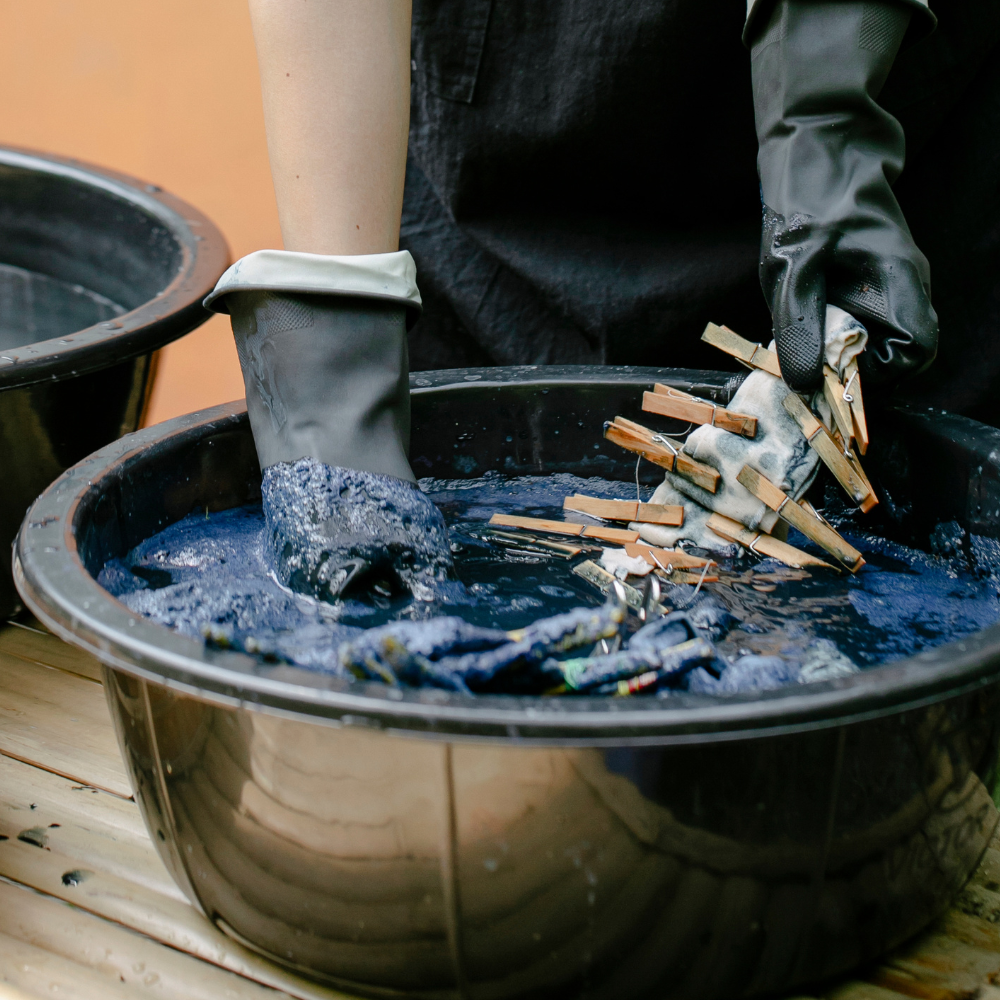

The Art of Indigo Dyeing
Now, let's roll up our sleeves and get our hands blue. Indigo dyeing is like cooking.
There are ingredients, there's a process, and the end result is always a delicious feast for the eyes.
Firstly, you'll need your indigo vat and the fabric of your choice.
The fabric can be anything from cotton to wool, as long as it's natural fiber-based.
Your indigo can take the form of either liquid or powder, and again you'll need some reducing agent (salt water or lemon juice).
Prepare the fabric by soaking it in a mixture of salt water and vinegar.
This helps to open up the fibers so that the dye can better adhere to them.
Next, you'll need to prepare your indigo vat by adding reducing agents, like vinegar or lye, which helps to activate the dye.
The dyeing process is easy - simply submerge your fabric in the vat for a few minutes and then take it out, hang it up to dry, and watch the transformation as the fabric turns a beautiful shade of blue.
You can also experiment with different techniques, like dip-dyeing or tie-dyeing, to create more intricate patterns.
If you're feeling adventurous, you can even try your hand at shibori - a traditional Japanese style of dyeing in which fabric is folded and bound before being dipped into the indigo vat.
Once the vat is prepared, you can begin dyeing your fabric using a range of techniques, such as tying, folding, binding, clamping, stitching, or painting.
Each technique creates a different pattern and effect on the fabric, which is revealed when you dip the fabric into the indigo vat.
The dyeing process involves several dips and oxidizing stages, where the fabric is exposed to the air to intensify the color and quality of the dye.
Finally, rinse the fabric in cold water and watch your masterpiece come alive.



Indigo Dyeing Techniques
The indigo vat can be manipulated to produce a variety of shades and tones, from navy blues to powder blues.
Depending on your technique, you can create depth of color in fabric or intricate patterns.
There are several different techniques for indigo dyeing that have been developed over the centuries, each resulting in unique patterns and shades.
Some of the most popular techniques include, immersion, tie-dyeing, shibori, and dip-dyeing.
Immersion dyeing involves completely submerging the fabric in an indigo vat for several minutes until the desired color is achieved.
The longer the fabric is left in the vat, the deeper the color.
Tie-dyeing involves folding and tying the fabric in various shapes and styles it before dyeing; this creates an array of colorful patterns on the fabric.
Shibori is a traditional Japanese method of dyeing using indigo and involves stitching, binding, or clamping pieces of fabric together before dipping them to create intricate designs.
Dip-dyeing is a modern technique that involves submerging one end of the fabric in an indigo vat, creating a gradient from dark to light.
Indigo dyeing can also be combined with other dyeing techniques such as batik or screen printing, for more complex and unique designs.
If you're feeling adventurous, don't be afraid to experiment with different techniques and ingredients to create your own signature style of indigo dyeing.

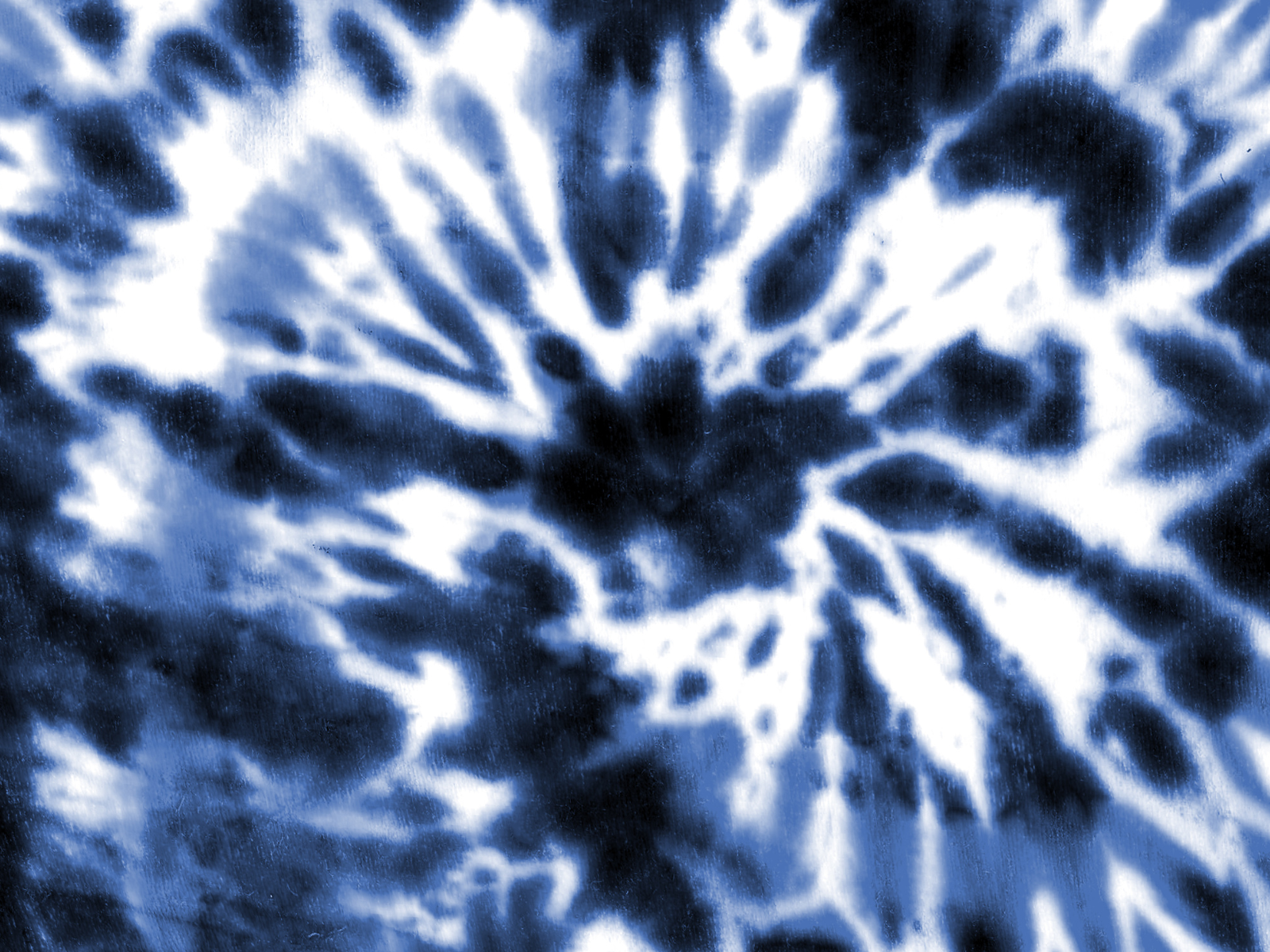

Tips and Tricks for Indigo Dyeing
Indigo dyeing can be a bit tricky and unpredictable, especially if you're new to the process.
Here are some tips and tricks to help you get the best results:
- Use natural fiber fabrics, such as cotton, silk, or linen, for best dye absorption and color depth.
- Pre-wash your fabric to remove any oils, dirt, or sizing that can affect the dyeing process.
- Use gloves and protective clothing when working with indigo, as it can stain your skin and clothing.
- Keep your indigo vat at a constant temperature, around 70-80°F, to prevent the dye from dying out or going stale.
- Stir the vat gently before dyeing to create a surface where the dye can adhere to the fabric more easily.
- Avoid over-dyeing or over-manipulating your fabric, as it can cause the dye to rub off or ruin the pattern.
- Experiment with different techniques and patterns to create unique and original designs.
- Remember to rinse the fabric in cold water and hang it up to dry after dyeing.
- Ironing your fabric helps set the color and makes it more durable.
By following these simple tips, you'll be able to create beautiful indigo-dyed fabrics that are as unique as you are!



Taking Care of Indigo Dyed Fabrics
Once you've dyed your fabric, it's important to take proper care of it so that the colors remain vibrant and intact.
The best way to do this is by hand washing with a mild detergent in cool water.
If using a washing machine, use a gentle cycle and turn the fabric inside out.
Be sure to wash indigo-dyed fabrics separately from other whites or light colored fabrics, as the dye can easily transfer.
Avoid using fabric softener and bleaching agents, as these may damage the fabric or discolor it.
It's also best to hang your dyed fabric to dry, rather than tumble drying it in a machine, as this can cause the colors to fade.
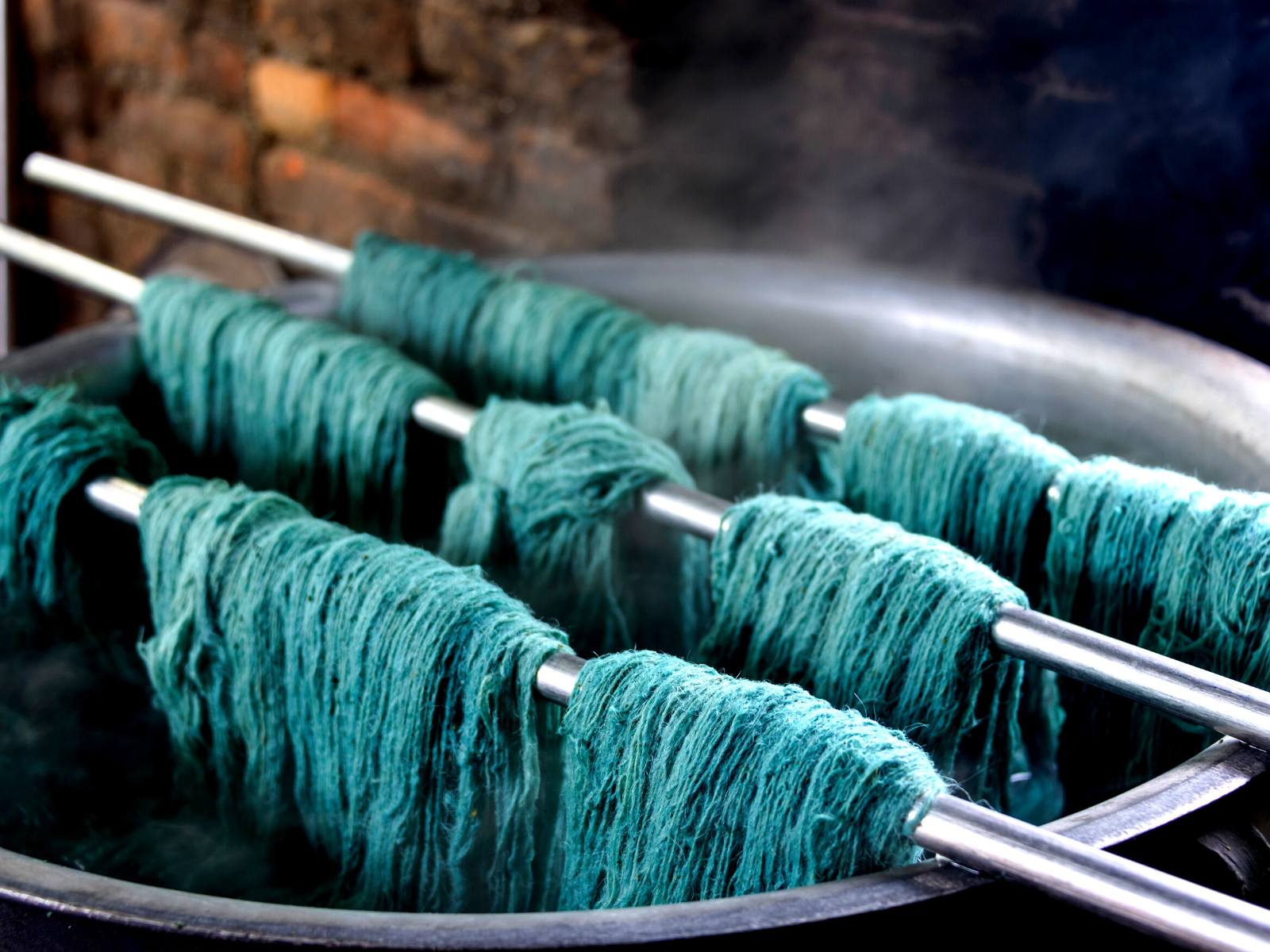


Fun Facts to Impress Your Friends
Indigo dyeing is a fascinating process with a long and rich history that spans many cultures and continents.
Here are some fun facts about indigo dyeing:
- Indigo dye is one of the oldest natural dyes in the world, dating back to ancient times.
- The Japanese word for blue, “ai”, comes from the word “indigo”.
- Ancient Egyptians were among the first to use indigo dye, and it was used to decorate tombs.
- In traditional Japanese dyeing techniques, a variety of ingredients, such as pomegranate peels or seaweed, are added to an indigo vat to create different shades and tones.
- Indigo dyeing was an integral part of the American slave trade, with many slaves forced to work in indigo plantations throughout the Americas.
- In India, indigo is still used today to create beautiful blue and white patterned saris known as Bandhani.
- The oldest record of a recipe for making natural indigo dye dates back to 5,000 BC.

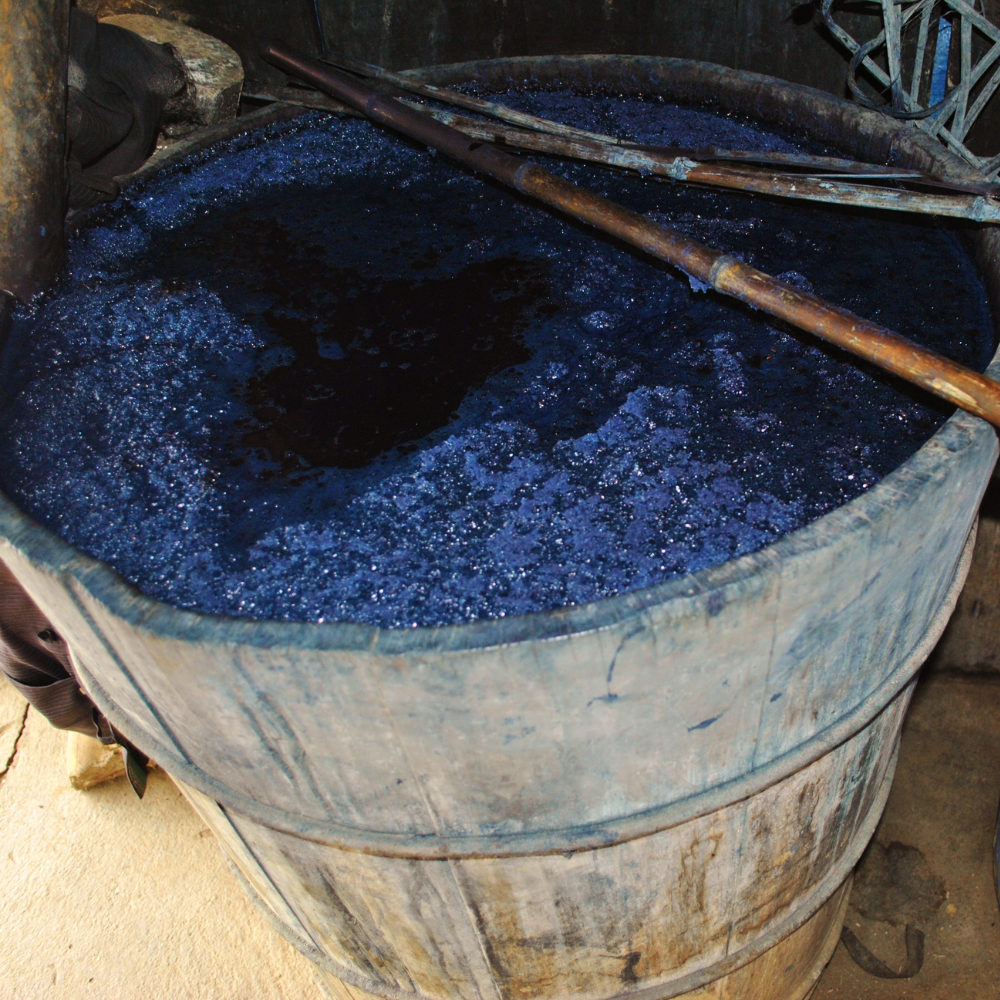

Creative Possibilities with Deep Blue Hues
Indigo dyeing is a centuries-old craft that has been used by cultures around the world to bring beauty and color into our lives.
The process involves manipulating natural plant dyes, chemicals, and fabrics to create a rainbow of colors.
The dyeing process might seem daunting at first, but with patience and practice you'll soon find yourself creating beautiful pieces of fabric art.
From the traditional Shibori techniques of Japan, which involve folding, stitching, or binding the fabric in various ways before dyeing, to the resist-dyeing technique of batik, where wax is used to prevent the dye from penetrating certain areas of the fabric, the world of indigo is ripe with creative potential.
Indigo dyeing is a fascinating and rewarding art form that allows you to transform plain fabric into something extraordinary.
By learning the history, techniques, materials, tips, and tricks of indigo dyeing, you can master this ancient craft and create your own beautiful and one-of-a-kind pieces.
The beauty of indigo dyeing lies not just in the stunning shades of blue it produces, but also in the process itself; it's a practice that requires patience, care, and creativity.
Whether you're a seasoned dyer or a curious beginner, we hope this guide has inspired you to delve deeper into the captivating world of indigo dyeing because indigo dyeing isn't just a fun DIY project; it's a nod to our ancestors, an homage to the environment, and a step towards sustainable fashion.
The next time you're rocking your indigo-dyed scarf or tote, remember that you're not just wearing a color, you're wearing a piece of history.
So, dive into the world of indigo dyeing and see where your creativity takes you!
Now, go forth and create beautiful blue hues!
Happy dyeing!
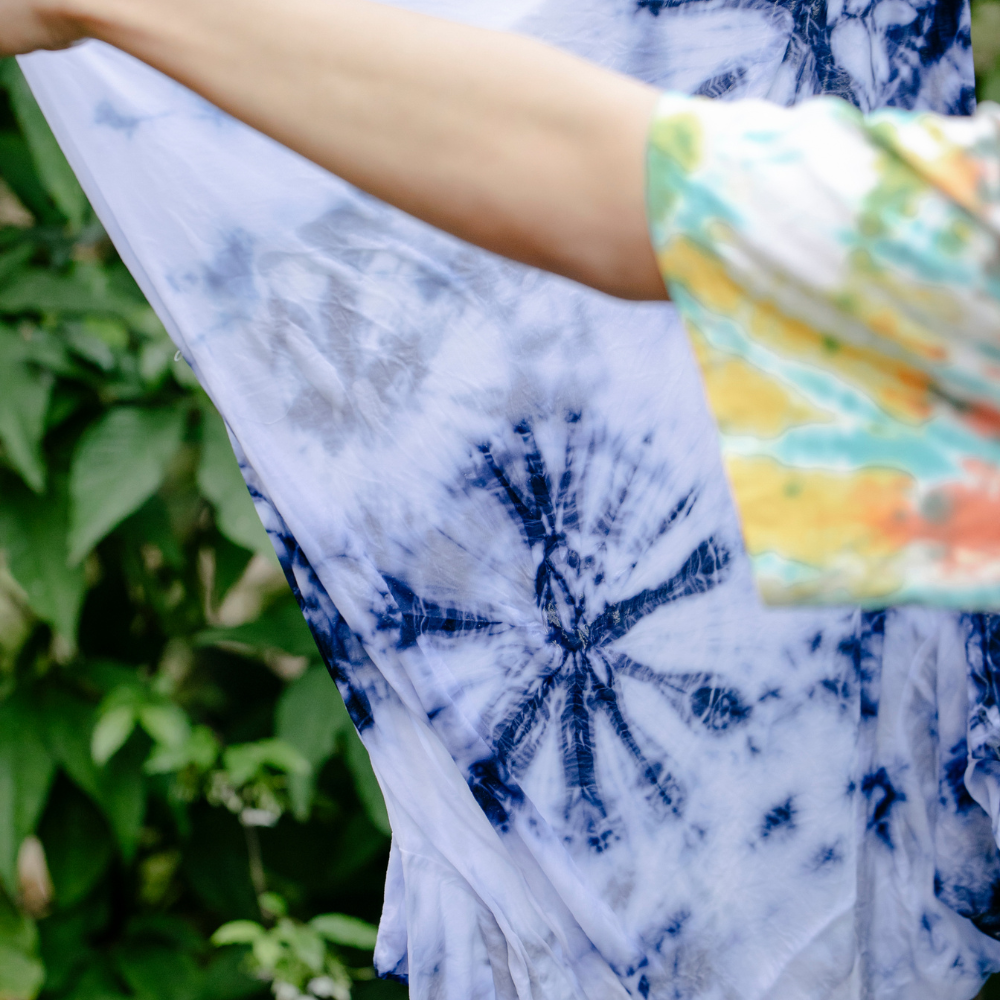
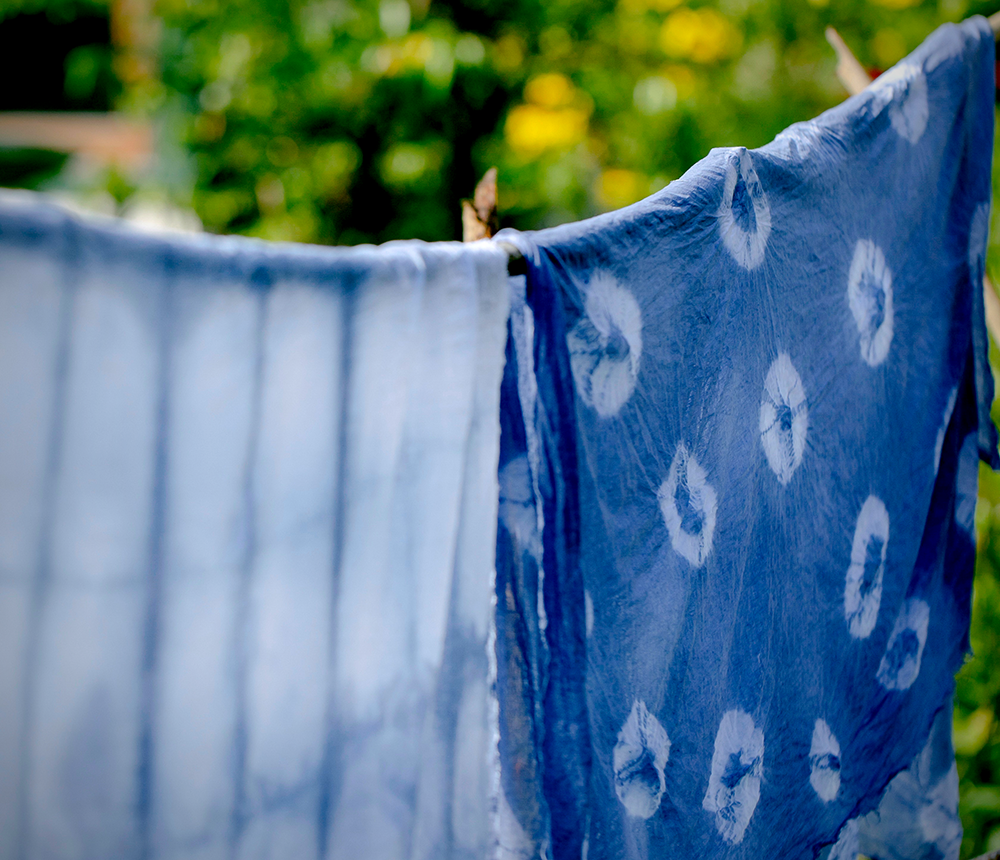
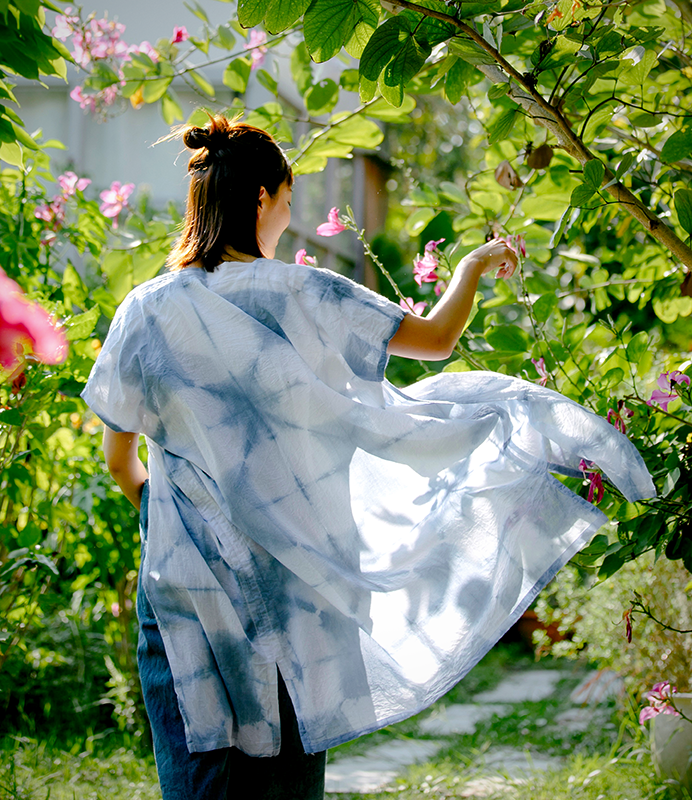
Ready to create your own incredible indigo hues? Check out Florence County Museum's video tutorial!
Want even more content about creativity and art?
Be sure to check out all of our creative chronicles!
Interested in crafting with fabrics?
Check out some of our other textile articles:


